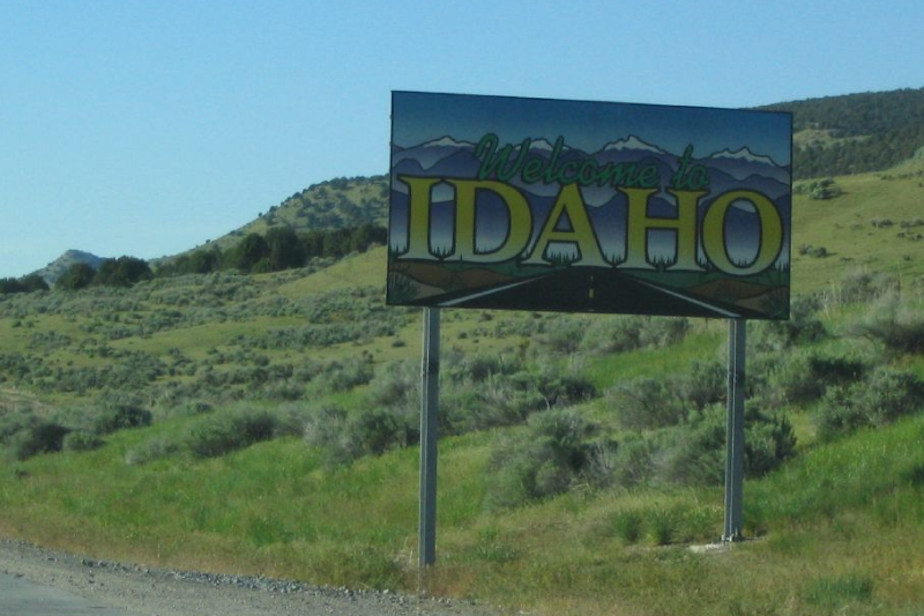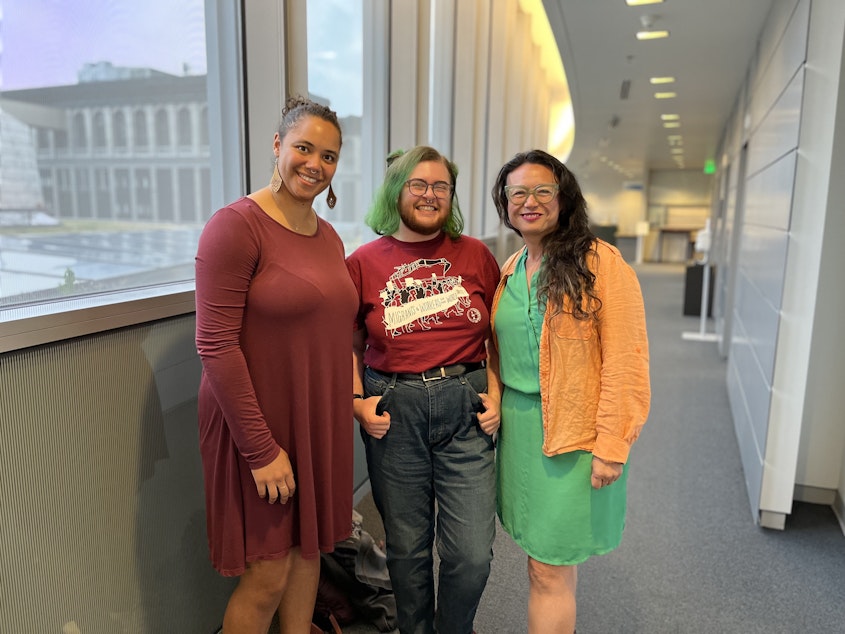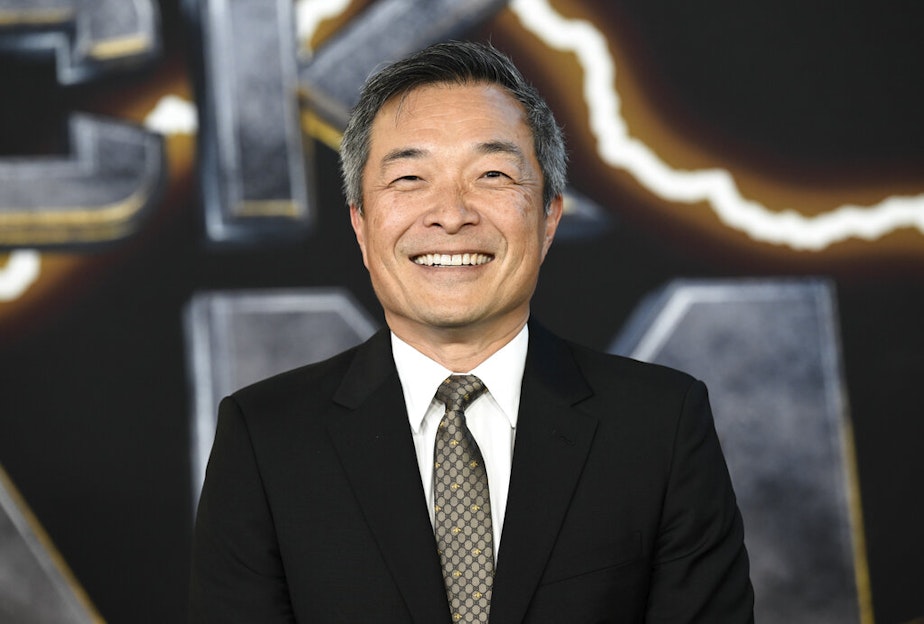A fresh effort for an old idea to split up the Northwest: Today So Far

The Greater Idaho movement has garnered a lot of headlines in recent months. It's a fresh effort based on a very old argument, and it faces a lot of challenges.
This post originally appeared in KUOW's Today So Far newsletter for May 26, 2023.
The "Greater Idaho" movement is the latest effort in the Northwest to promote that people would be better off by making things more the same, and avoiding our differences. The idea here is to move the border between eastern Oregon and Idaho to the Cascades. This means that eastern Oregon would become part of Idaho. As I've pointed out here before, the resulting map of Idaho would resemble a giant middle finger.
According to “Greater Idaho” spokesman Matt McCaw, there is a logic behind the idea. Eastern Oregon, "Votes like Idaho, lives their lives like Idaho, would prefer to have the state governance of the state of Idaho." McCaw recently told Soundside that there is also the classic argument that has divided the USA since its inception — rural versus urban. Lifestyles are just different between the two, but there are far more people, aka voters, in the cities.
"The west side of Oregon votes very Democratically, left leaning, it's more urban, wealthier, it's less agricultural," McCaw said. "The east side of the state is conservative, rual, has a different economy, votes differently .... Oregon has one major urban area, that is the Portland metro area. That Portland metro area has 2 million people. So whatever the Portland metro area decides, gets implemented across the state and there is nothing eastern Oregonians can do about it. Even if that is not at all what they want for their communities. Even if they vote overwhelmingly against whatever policies are being enacted. They simply don't have the numbers to overcome the other side of the state."
Putting issues aside, you have to admit that scenario would make any person feel quite powerless. Perhaps it's easy for me to comment on news like this, because I live on the side of the mountains that generally gets what it wants. Of course, there are issues at play among all this, and they are hot button ones. There was a move to lower drug possession crimes to a civil citation in Oregon. The east side wasn't for it, the west side voted it through. There was also a gun control measure that the east side didn't favor, but the west side outvoted them again.
The border move also appeals to some in Idaho, because Oregon has legalized cannabis. Some Idaho lawmakers appear to associate pot with the problems of harder drugs like opiates and meth. By moving the Oregon border, many feel it would move the availability of Oregon's cannabis farther away from its largest city, Boise (clearly, these Idaho lawmakers were never any fun at any college party they attended).
Sponsored
"Self-determination matters," McCaw said. "Where that state line is right now between Oregon and Idaho, doesn't make sense and is causing more problems than it's solving. We can move it, solve problems, lower political tension, and get good outcomes."
It sounds sensational, intriguing, and worth plenty of clicks. But this sort of reaction is not uncommon and efforts to split up, break away, move borders, or secede have popped up in the Northwest since the 1800s. There's the state of Jefferson idea that aimed to make a new state out of southwest Oregon and northwest California. There have been pushes for a state of Lincoln, to be carved out of eastern Washington and the Idaho panhandle. In 1937, a representative from Clark County wanted to make King County its own state, using an urban versus rural argument. There was also an effort in the 1990s to split off eastern King County into a new "Cedar County." Again, the foundation was an urban versus rural debate.
In 2016, a group of supporters for a new nation called Cascadia met in Seattle. That country would be formed by combining Oregon, Washington, and British Columbia. Around the same time, in the wake of Donald Trump's election, there was an effort to put the option of Oregon seceding from the United States up for a vote.
Then you have the state of Liberty, promoted by former state lawmaker Matt Shea. This idea to form a theocracy, er, I mean, a new state, would split eastern and western Washington. After Shea allegedly dabbled in domestic terrorism, and left office, other state Republicans took over the idea in Olympia.
In fact, historian Feliks Banel once noted that folks have attempted to carve out new states or move borders throughout the Northwest about 20 times between 1896 and 2019, mostly having to do with the states of Lincoln or Liberty. None have gotten far. Likely because it's quite a tall order. In short, you'd have to convince locals that they want it. Then the state Legislature has to vote in favor (two state Legislatures if you're dealing with two states). Then Congress has to sign off on the whole plan.
Sponsored
This latest endeavor means that eastern Oregon would come with an estimated $4-6 billion in debt. That side of the state is heavily subsidized by the wealthier western Oregon. Idaho would also have to subsidize them, too, though it would be cheaper. On top of all that, there is the fact that white supremacist ideologies have been behind many, many previous ideas around moving borders and creating new states in the Northwest. Like it or not, it's a fact that proponents will have to address. McCaw said folks who bring that up are promoting "baseless smears" that have nothing to do with their movement.
Those are the challenges the Greater Idaho movement faces now, but they have still found some who are open to the idea on both sides of the border. Idaho lawmakers voted to hear Oregonians out about it, but it was just to talk. So far, a total of 12 eastern Oregon counties have voted in favor of the idea.
There's another potential problem with the Greater Idaho plan, according to University of Oregon Political Science Professor Joe Lowndes — politics change over time. Who's to say what the political leanings of these areas will be in years to come?
"If you asked residents of eastern or southern Oregon what rural values meant 100 years ago, during the populist movement, rural values meant holding big financial interests accountable, having greater regulation over banks, greater regulation over the steel industry, railroads," Lowndes told Soundside.
When eastern Washington wanted to secede in 1896, the core issue was bimetallism, an issue so far off today that I have to explain it. Basically, it deals with monetary policies and the value of precious metals.
Sponsored
Lowndes admits that these areas are more conservative, but notes that the movement's organizers emphasize hot button national issues, like critical race theory, trans issues, Covid mandates, and a range of others that have no inherent ties to being a rural resident, farmer, rancher, etc.
That's a lot of difficult truths for Greater Idaho to juggle. Here's another one for the entire region: With great power comes great responsibility. If you don't play nice and consider your neighbor, then you're opening a gap, and creating an opportunity for extreme elements to step in and fill that gap.
I can go on and talk about how playing in bands that crossed different genres made better music, and better players. I could also quote folks who have already said this better than me, like "Darkness cannot drive out darkness: only light can do that. Hate cannot drive out hate: only love can do that." Or "Fail to notice your assumptions, and they may harden into lies. Turn them into questions and they'll get you closer to the truth." I could even talk about wise lessons from the Vulcans. But instead I'll turn to something that a Seattle pastor / barista once told me.
Leading up to the 2020 elections, I spoke with Coté Soerens about how she navigates tense politics, especially when she has firmly held beliefs of her own.
“I’m primarily a neighbor. That is the most sacred thing we can be, is neighbors," Sorens said. “I land wherever care for neighbors is highest. If we are so left that we forgot about good relationships and caring for each other, I reel it back a little bit. When you start yelling at people, or you start demonizing people, I’m not that far left.”
Check out Soundside's full segment on Greater Idaho here.
The Friday Five: News you may have missed this week, and other cool stuff on KUOW.org
- After more than a decade, Seattle passes new rules to protect more city trees
- For Yakama Nation, green energy projects echo colonization
- More than 6 in 10 say Biden's mental fitness to be president is a concern, poll finds
- Microsoft joins plea for government regulation of AI tools like ChatGPT
- Poll: Most Americans say curbing gun violence is more important than gun rights
AS SEEN ON KUOW

Seattle Social Housing Public Development Authority Board Chair Kaileah Baldwin (left), with board members Devyn Forschmiedt (middle) and Secretary Dawn Dailey (right). The authority’s board will develop, acquire, and maintain public, affordable units alongside existing housing resources in the city. (Joshua McNichols / KUOW)
DID YOU KNOW?
Memorial Day is celebrated on the last Monday in May. This year, it's May 29. But for most of this holiday's history, it was celebrated on May 30.
The first Memorial Day followed the Civil War. It was called Decoration Day then, and was started in honor of Union soldiers who died in the war. There were a lot of local memorial days across the country around that time, celebrated by different communities. Decoration Day was started by a Union veteran's fraternal organization in 1868, and is generally noted as the start of the national version of the holiday. By 1890, every state was honoring the day. Then came two world wars, as well as quite a few other wars. The observance evolved in 1971 when Congress made the name "Memorial Day" official, and set it to take place on the last Monday in May.
Ever since the Civil War, the purpose of Memorial Day has been to honor those who have died in service of the United States. This sets it apart from other military holidays. Veteran's Day (Nov. 11) is in honor of veterans, and Armed Forces Day (third Saturday in May) in honor of active military members.
ALSO ON OUR MINDS

DC Comics' boss knows the challenges ahead — and the problem superhero films can pose
Jim Lee is the new president of DC Comics, adding the title alongside his existing duties as publisher and chief creative officer. What's the big deal? Even if you aren't into comic books, you can't have missed the enormous impact superhero films have had on pop culture. Yet recent superhero movies have been more critically divisive and less profitable at the box office than their predecessors, prompting questions about superhero fatigue kicking in.

